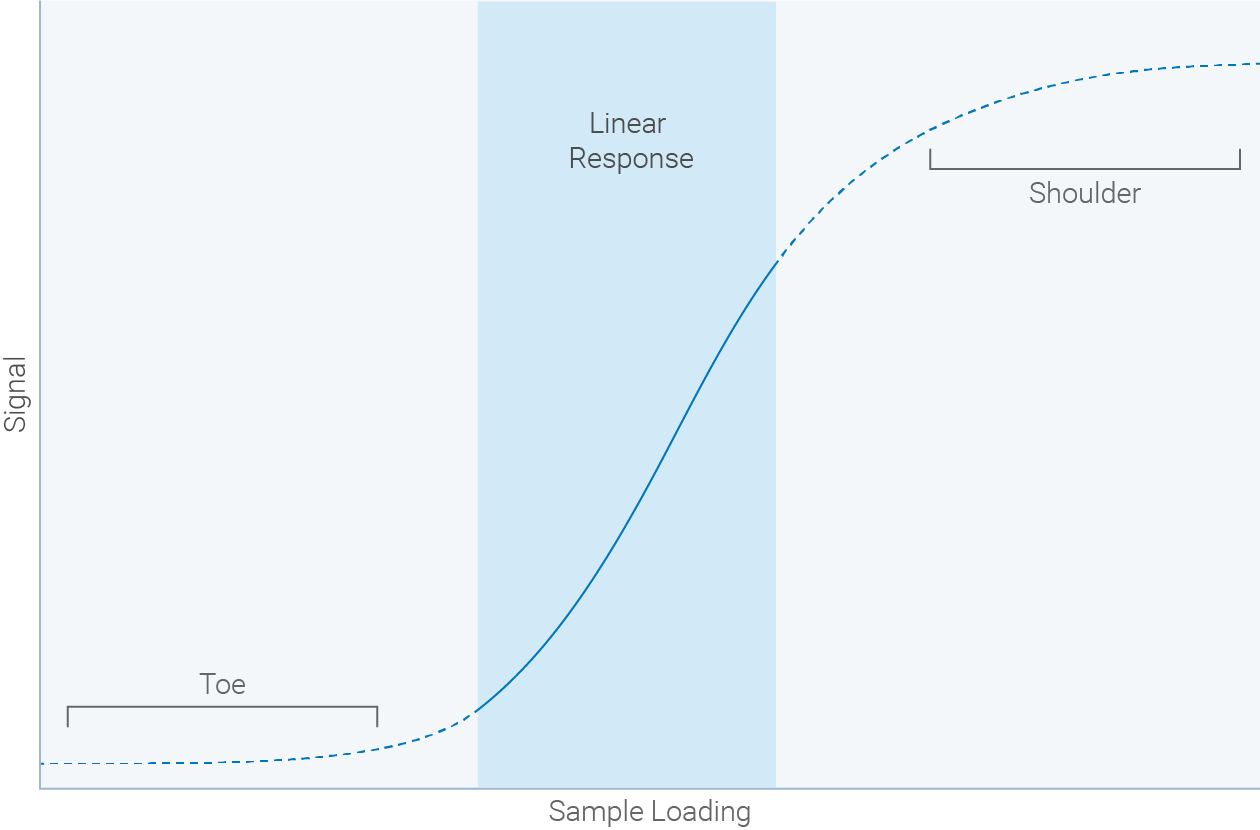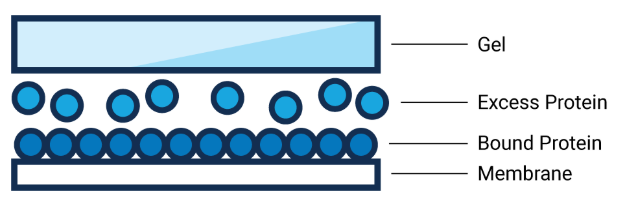Understanding linear range is important for accurate detection of your target samples and the interpretation of your results. So what exactly is linear range, and why is it critical for proper experimentation?
- Dynamic range: the span of signal intensities the detection system can detect in a single capture.
- Linear range: the span of signal intensities that display a linear relationship between the amount of target on the membrane and the signal intensity recorded by the detector.
- Combined linear range: the range of sample loading that produces a linear response between sample loading and signal intensity for both the target and loading control signals.

Then, what does linear range have to do with saturation?

To the left of the linear range is the toe region. This section indicates low sensitivity where signals may not reflect sample concentration.
To the right of the linear range is the shoulder region. That section indicates a strong signal, which may cause saturation and alter data analysis.
Below are several types of saturation you may encounter if your experiment strays into the shoulder range.
Saturation occurs when an increase of the target amount does not yield an expected increase in band intensity. For Western blots, there are at least three types of saturation:
- Membrane saturation: when the binding capacity of the membrane has been exceeded and no additional target can bind.
- Film saturation: when film can no longer detect additional signal because the silver grains in that region have already been activated.
- Signal or detector saturation: when signal intensity is too bright to be accurately recorded by the detection system.

The goal, therefore, is to avoid saturation in the shoulder range and low sensitivity in the toe range by remaining in the linear range. Within this range, band intensity is linear to the amount of target, and a change in target abundance will have a proportional change in signal response.
To further improve your research, utilize Empiria Studio® Software for validation and analysis workflows, replicate comparison, and easy sharing methods. It can guide your next steps in validating the combined linear range and determining the right amount of protein to load.
Brush up on dynamic and linear range best practices and calculation exercises with the Linear Range for Quantitative Western Blots course in the Lambda U® education portal.
Powered by Froala Editor